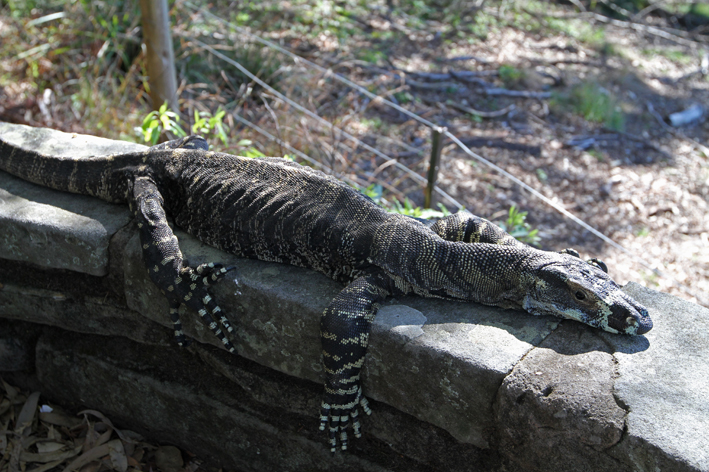Some handlers of so-called tame Lacies have suffered horrific injuries because they become casual about them. These animals are not malicious, but they have a ferocious feeding response, and when they switch into that mode, only a fool would mess with them.
I certainly wouldn't be feeding a large (or even a small) Lace Monitor so close to my feet. It's asking for trouble.
In my experience, the tame captives are worse than the wild ones because they don't have that element of caution holding them back. I'd never feed my very 'tame' adult male lacie with my hands, or thong-clad feet, so close to the food as in the images at the beginning of this thread because once he starts eating he switches into 'food brain' mode and all bets are off. Anything moves and it's a goner. Fredsnugget, I can fully understand why you got enjoyment out of feeding that monitor. They're spectacular animals and it's always exciting to have one interact, but in the end always be mindful of what's best for the animal, long term. Having seen what they are capable of doing, I wouldn't trust them to 'repay the favour' no matter how quiet and non-threatening you may be, either. That works with snakes and other animals likely to bite one out of fear and self defence, but the feeding response of an adult lace monitor takes no prisoners once it gets going.
One more thing:
As to their diet and scabing of people thats there choice and it certainly doesnt look like its effected there heal at all
Unfortunately, it's not their choice. We're the thinking animal here, whereas they're responding to instincts honed over millions of years which did not include handouts from humans. Although you may be feeding the monitors something that isn't harmful, once they realise that humans = food, they often end up eating things that are extremely unhealthy. I once saw a lace monitor swallowing aluminium foil because it smelled like barbecued meat. Its instincts told it that anything that smells like meat is edible, but the instincts don't take into account man-made things like aluminium foil. I ran towards it but it had already downed it before I got there.
That may have been what happened to this monitor. This is one of the wild lacies I've seen a number of times over the years. It used to be a beautiful, robust adult lace monitor, as in this photo from a couple of years ago:
This is how it looked the last time I saw it, right at the end of last summer. Compare the patterns and you'll see it's the same individual. It should have been fat and healthy, ready to go into winter, but it was all skin and bones.
It's bad for a monitor to into winter looking like that and its chances of survival are thin. I would put money on it that it got like that through eating the wrong things and probably having an intestinal blockage.
My apologies if all of this sounds like a lecture - as I said, I do understand the desire to interact with the wild monitors, but just be mindful of where it might lead.
I imagine you've all seen this before, but this video (not mine) shows how geed up monitors can get over food.
[video=youtube;F0nkBNicJZM]http://www.youtube.com/watch?v=F0nkBNicJZM&feature=youtube_gdata_player[/video]





